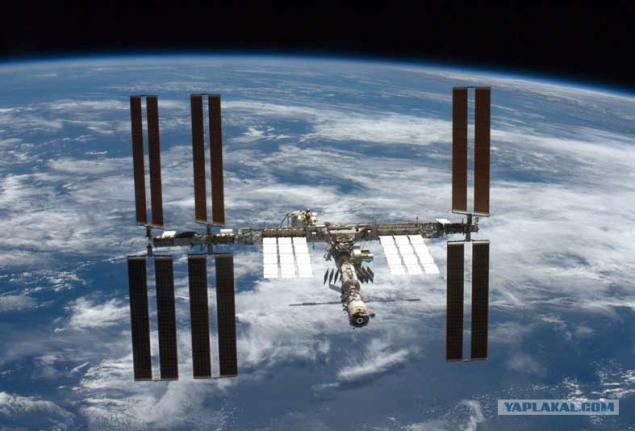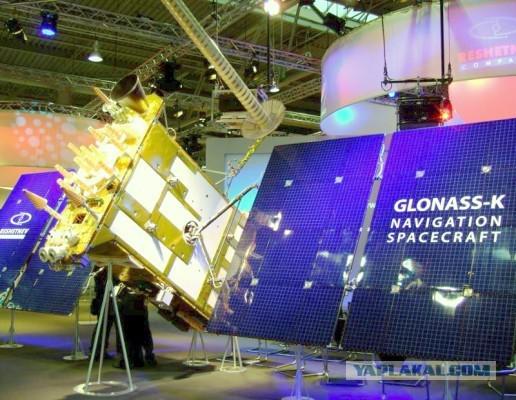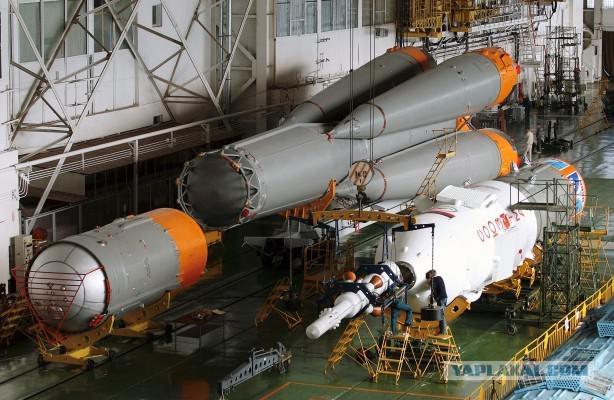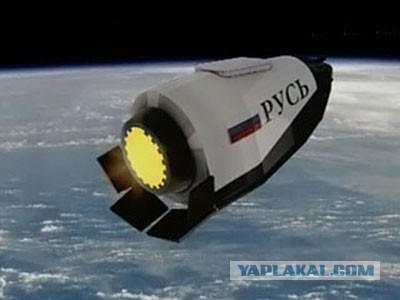840
Russian astronautics
Given the number of negative reports in the theme of the last unsuccessful start, I would like a small gash an article, in order to bring some clarity to the minds of the ignorant kompadov yes "podrazbavit" negative. A small educational program, so to speak.
The Russian space program: is there any reason to panic?
Will be 10 photos + text

Introduction
Unfortunately, did not have to start with the space, as there are three factors that seriously affect the perception of the state of affairs in the Russian space program, and not taking on their amendment, in my opinion, will not fully make this review.
1. Policy. 2011, upsurges of accidents in the national space program, came in the pre-election period of political tension, and stakeholders to fully use it. Meme about "Pacific satellite constellation" Force is the second year, and silly jokes on this meme in the comments appear with depressing regularity.
2. The specifics of the media. Successful launch - this news is much smaller than an accident. Therefore, people are not interested in space specifically hear about accidents, but are unlikely to hear about the successes.
3. Mental aberration. In comments to the article on space Runet is a very sad aberration - a combination of black and white thinking and unrealistic demands. If we had not done "with a range of shuttle flight to the Moon," that our business really bad and nothing good we have. In the real world it is impossible to always be the best in all respects, and the shortcomings does not mean a global collapse.
At the end of the introduction to stress that this article - review the educational program, and perhaps you will not find here a lot. Also, I tried to give approval to each link, so do not be surprised abundance of blue text (all references in the original). Manned spacecraft
Start today a man into space on their own may be only two countries - Russia and China. All other countries own manned spacecraft are missing or are in development. Consider in more detail:
Russia: Successful use of spacecraft "Soyuz" fourth modification "TMA-M", is preparing a modification of the fifth "TMA-MS", which is expected to be the last. Developed "Prospective Piloted Transport System (PCA)", the first unmanned launch no earlier than 2017
USA: The "Space Shuttle" closed in 2011, develops a substitution program "Constellation" is stopped in 2010. The ship "Orion", included in the program "Constellation", however, was not closed completely, and is currently being developed (the first launch no earlier 2017). There is also a state program financing of private firms-developers of manned spacecraft (CCDev), which develops ships DreamChaser, DragonRider, CST-100. However, none of them did not go in flight before 2017, and NASA buys space on the "union" has until June 2017.
Europe: There is a project CSTS, which is in the middle of zero planned to develop in cooperation with Russia, however, a firm contract has not been signed. Judging by the fact that CSTS and ACTS, as he began to call at the end of the zero, surprisingly little information on the Internet, the project probably frozen.
China is maintained spacecraft "Shenzhou", in 2007 there were some photos reusable device "Shenlun", but the status of this program is unknown.
India: Project ISRO. The first flight was planned in 2012, then 2016, and now there are doubts that it will be completed, due to financial difficulties.
Japan: Shuttle «HOPE-X» is canceled, the disposable unit «Fuji», too, was canceled.

Orbital stations
ISS is a joint project of Russia (4 module "Zarya" belongs to the United States), United States (7 modules), the European Space Agency (module 1), Canada (manipulators "Canadarm2" and "Dextre"), Japan (1 unit). Of all countries, only Russia is working on the expansion of the ISS, the module "Science" is set to launch in November-December this year.
Also, space station from one module "Tyangun-1" is China. More can be noted Bigelow private station, which is not expected before 2014.

Cargo ships supplying the ISS
Russian "Progress", 2, 3 t. Of payload, the most frequent starts. Return gruzavozmozhno, but is rarely used.
US: Dragon, the most promising, it is expected that will be manned, 3, 3 m. In orbit, 2, 5 t back.
Europe: ATV, 7, 6 m. In orbit, return is not provided.
Japan: HTV, 6 m. In orbit without return.

Satellite navigation systems
The global satellite navigation systems are the only two countries: Russia and the United States. In other countries such systems are lacking or are local:
Russia: GLONASS satellite as planned 24 systems, 28 are now in orbit, 3 "GLONASS-M" preparing to launch on July 2 is not running due to an accident RN.
US: GPS, satellite 24 according to plan, 31 in orbit, the most recent launched in May 2013
Europe: Galileo, 27 ± 3 backup satellites according to plan, is now in orbit 4 of the experimental apparatus, the full deployment of the system promised by 2020.
China local navigation system "Beidou". Now he works for the Asian region, the global version is expected in the region in 2020.
India: IRNSS, regional Indian system, 7 satellite as planned, the first successful launch ozhidaetsyaproshёl July 1 this year.
Japan: QZSS, a system to improve GPS, locally Japan, 4 satellite as planned (3 for the original plan), 3 in orbit, it is expected the announcement of the start of operation of the system.

Other application unmanned space exploration
In any developed space power has satellite constellation, providing the public and the military. This intelligence (species and radar), communications, missile warning, meteorology, etc. Unfortunately, because of the abundance of the program simply listing them interested, a detailed account is impossible, and a brief comparison of the six countries, I can not hold. Also, due to the secrecy of the military component in the coming years we hardly know the real characteristics of these satellites. Therefore we have to limit ourselves to the general phrases that all of the six countries have the appropriate orbital grouping. As for Russia, the panic threads on online forums like "Russia has no weather satellites. Not at all "in 2004 are gone. We have satellite remote sensing ("Electro-L", "Canopus-B", "Resurs-P"), connected ("Arrow", "Meridian"), intelligence ("Condor", "Persona"), meteorological ("Meteor-M"), EWS ("Eye-1").

Automatic interplanetary station
Here, the lead NASA and ESA. In Asia, there is a Asian space race between Japan, China and India. Japan led the 90s, but now the leaders came to China. Currently, there goes the competition for a soft landing on the moon landing and rover. Excellent list is on the site of NASA and Habré.
Russia: the last successful AMC were "Vega" in 1984, "Phobos" in 1988 were partially successful, ambitious "Mars-96" and the memorable "Phobos-Grunt" ended in failure. Fortunately, modern AMS often constructed in international cooperation, and our boosters output AWS as our contribution to the mission, our instruments were looking for water on the moon, and now looking for her on Mars. Currently, work is underway on missions to the Moon ("Luna-Globe", "Luna-Resource") and a joint project with ESA ExoMars
USA: Many successful AMC, ranging from "Voyager", and ending with the most popular «Curiosity». Because of the near future - the mission to study the Martian atmosphere MAVEN.
Europe: second place in the number of stations of the most interesting - the mission to the comet Churyumov-Gerasimenko, Rosetta. The plans of the mission to the moons of Jupiter EJSM (involving NASA and the Russian Space Agency) and the aforementioned ExoMars.
China: The last success - the lunar orbiter "Chang'e-2" in 2010, plans to landing on the moon and the lunar rover, the mission of "Chang'e-3».
India latest success - a lunar orbiter to the impactor "Chandrayaan-1" in 2008, plans orbiter "Chandrayaan-2" and the lunar rover, delivered to the surface of the "Luna-Resource».
Japan: latest success - the lunar orbiter "Kaguya" (2007), in the plans of the mission "Hayabusa 2" (the asteroid) and «BepiColombo» (Mercury).

Scientific apparatus
A very broad category, list all the devices are unlikely to succeed. Different countries cooperate, often sets complement each other, for example, the Russian will not be his "Hubble", but there is one, and three more are planned telescope in the range in which the "Hubble" does not see. Among the scientific apparatus nanosatellites there are simple, there is a very complex system, so focus on the most notable:
Russia: The most prominent project is definitely "Radioastron", a program at the forefront of global scientific knowledge. From X-ray telescopes are planned and gamma "Spektr-RG" UV "Spectrum-UV", in the long term millimeter, submillimeter and infrared "Millimetron." Operated biological satellites 'Bion' last flight this year, and natural satellites "Photon", the last flight in 2007, is expected to start 2013-2014.
USA: Leader in the number of vehicles. Some telescopes: optical "Hubble" infrared "Spitzer" (2003-2009), recently the failed "Kepler" to search for extrasolar planets, X-ray, "Chandra" gamma-ray bursts «Swift».
Europe: Also a considerable amount of devices: the recently finished his work "Herschel" CMB "Plank».
China was able to find only in conjunction with ESA «Double Star» for the study of the magnetosphere.
India: The X-ray experiment «IXAE» (2006), is scheduled to launch the X-ray and UV «Astrosat».
Japan: Infrared «Akari», X-ray «ASTRO-E2».

Launch vehicles
In this category uniquely Russian leader. For many years, we have the most runs.
Russia: A full fleet of launch vehicles, mass production, increasing production. Lightweight missiles of several types: "Dnepr", "Rokot". The family of medium-range missiles "Union" with three (one under construction) launch complex in Russia and one in South America. Heavy "Proton". Are being developed modernized 'Union 2.1V "," Soyuz-2-3 "," Soyuz-5 "on liquefied natural gas, modular, developed in light and heavy versions, rockets" Angara ", the first stage of which has already been successfully flew three times part of Korean rocket KSLV-1.
US: The US has a good groundwork for oxygen-hydrogen engines - the upper stage "Centaurus" heavy, but expensive "Delta". But with the oxygen-kerosene engines unpleasant situation - "workhorse" of the American astronautics, «Atlas-V», the first stage uses Russian RD-180. Comes to the ridiculous - satellite missile warning SBIRS with pathos bald eagles also launched on the Russian engine. Of course, this situation is the United States really do not like, and they make a serious effort to get their booster rockets: «Falcon», «Antares» (Russian engine again, now the NK-33). Still it is possible to note a very interesting booster air start «Pegasus», sorry, it takes only 450 kg into orbit. Second and third place in the number of launches.
Europe: Light rocket «Vega», the average rocket "Soyuz", imported from Russia, the heavy rocket «Ariane-V», the fourth largest number of launches.
China: Very large family of rockets "Long March" is developing very actively. Developed heavy rocket "Long March 5", second or third place in the number of launches.
India: Easy «PSLV», the average «GSLV», developed «GSLV Mk3», 2-3 start to the year, trying to develop actively.
Japan: «H-IIA» and «H-IIB», 2-3 start to the year, much progress has been noticeable.

Conclusion
After all of the above arguments, I hope you have no doubt that the position of Russia in space exploration can be justifiably proud. Since ESA is a joint project of twenty-odd countries, we firmly among the top of the first space of (I would have given the second place: the US, Russia, China) or in four space agencies (I would have given the second place: the US, Russia, ESA, China ). I hope this article will serve as a good reference material.
Upd: Yesterday's failed launch of "Proton" in the article does not change anything. At GLONASS there is at least 3 backup satellites. Most likely move the date starts to "Proton" because of the time to investigate the causes and possible revision, but this does not change the overall situation.
***
There is a lot of information on the promising work that is now underway. Just do not want to torment you more then expectation. Behind this, I have everything. Think.
***
Source

Source:
The Russian space program: is there any reason to panic?
Will be 10 photos + text

Introduction
Unfortunately, did not have to start with the space, as there are three factors that seriously affect the perception of the state of affairs in the Russian space program, and not taking on their amendment, in my opinion, will not fully make this review.
1. Policy. 2011, upsurges of accidents in the national space program, came in the pre-election period of political tension, and stakeholders to fully use it. Meme about "Pacific satellite constellation" Force is the second year, and silly jokes on this meme in the comments appear with depressing regularity.
2. The specifics of the media. Successful launch - this news is much smaller than an accident. Therefore, people are not interested in space specifically hear about accidents, but are unlikely to hear about the successes.
3. Mental aberration. In comments to the article on space Runet is a very sad aberration - a combination of black and white thinking and unrealistic demands. If we had not done "with a range of shuttle flight to the Moon," that our business really bad and nothing good we have. In the real world it is impossible to always be the best in all respects, and the shortcomings does not mean a global collapse.
At the end of the introduction to stress that this article - review the educational program, and perhaps you will not find here a lot. Also, I tried to give approval to each link, so do not be surprised abundance of blue text (all references in the original). Manned spacecraft
Start today a man into space on their own may be only two countries - Russia and China. All other countries own manned spacecraft are missing or are in development. Consider in more detail:
Russia: Successful use of spacecraft "Soyuz" fourth modification "TMA-M", is preparing a modification of the fifth "TMA-MS", which is expected to be the last. Developed "Prospective Piloted Transport System (PCA)", the first unmanned launch no earlier than 2017
USA: The "Space Shuttle" closed in 2011, develops a substitution program "Constellation" is stopped in 2010. The ship "Orion", included in the program "Constellation", however, was not closed completely, and is currently being developed (the first launch no earlier 2017). There is also a state program financing of private firms-developers of manned spacecraft (CCDev), which develops ships DreamChaser, DragonRider, CST-100. However, none of them did not go in flight before 2017, and NASA buys space on the "union" has until June 2017.
Europe: There is a project CSTS, which is in the middle of zero planned to develop in cooperation with Russia, however, a firm contract has not been signed. Judging by the fact that CSTS and ACTS, as he began to call at the end of the zero, surprisingly little information on the Internet, the project probably frozen.
China is maintained spacecraft "Shenzhou", in 2007 there were some photos reusable device "Shenlun", but the status of this program is unknown.
India: Project ISRO. The first flight was planned in 2012, then 2016, and now there are doubts that it will be completed, due to financial difficulties.
Japan: Shuttle «HOPE-X» is canceled, the disposable unit «Fuji», too, was canceled.

Orbital stations
ISS is a joint project of Russia (4 module "Zarya" belongs to the United States), United States (7 modules), the European Space Agency (module 1), Canada (manipulators "Canadarm2" and "Dextre"), Japan (1 unit). Of all countries, only Russia is working on the expansion of the ISS, the module "Science" is set to launch in November-December this year.
Also, space station from one module "Tyangun-1" is China. More can be noted Bigelow private station, which is not expected before 2014.

Cargo ships supplying the ISS
Russian "Progress", 2, 3 t. Of payload, the most frequent starts. Return gruzavozmozhno, but is rarely used.
US: Dragon, the most promising, it is expected that will be manned, 3, 3 m. In orbit, 2, 5 t back.
Europe: ATV, 7, 6 m. In orbit, return is not provided.
Japan: HTV, 6 m. In orbit without return.

Satellite navigation systems
The global satellite navigation systems are the only two countries: Russia and the United States. In other countries such systems are lacking or are local:
Russia: GLONASS satellite as planned 24 systems, 28 are now in orbit, 3 "GLONASS-M" preparing to launch on July 2 is not running due to an accident RN.
US: GPS, satellite 24 according to plan, 31 in orbit, the most recent launched in May 2013
Europe: Galileo, 27 ± 3 backup satellites according to plan, is now in orbit 4 of the experimental apparatus, the full deployment of the system promised by 2020.
China local navigation system "Beidou". Now he works for the Asian region, the global version is expected in the region in 2020.
India: IRNSS, regional Indian system, 7 satellite as planned, the first successful launch ozhidaetsyaproshёl July 1 this year.
Japan: QZSS, a system to improve GPS, locally Japan, 4 satellite as planned (3 for the original plan), 3 in orbit, it is expected the announcement of the start of operation of the system.

Other application unmanned space exploration
In any developed space power has satellite constellation, providing the public and the military. This intelligence (species and radar), communications, missile warning, meteorology, etc. Unfortunately, because of the abundance of the program simply listing them interested, a detailed account is impossible, and a brief comparison of the six countries, I can not hold. Also, due to the secrecy of the military component in the coming years we hardly know the real characteristics of these satellites. Therefore we have to limit ourselves to the general phrases that all of the six countries have the appropriate orbital grouping. As for Russia, the panic threads on online forums like "Russia has no weather satellites. Not at all "in 2004 are gone. We have satellite remote sensing ("Electro-L", "Canopus-B", "Resurs-P"), connected ("Arrow", "Meridian"), intelligence ("Condor", "Persona"), meteorological ("Meteor-M"), EWS ("Eye-1").

Automatic interplanetary station
Here, the lead NASA and ESA. In Asia, there is a Asian space race between Japan, China and India. Japan led the 90s, but now the leaders came to China. Currently, there goes the competition for a soft landing on the moon landing and rover. Excellent list is on the site of NASA and Habré.
Russia: the last successful AMC were "Vega" in 1984, "Phobos" in 1988 were partially successful, ambitious "Mars-96" and the memorable "Phobos-Grunt" ended in failure. Fortunately, modern AMS often constructed in international cooperation, and our boosters output AWS as our contribution to the mission, our instruments were looking for water on the moon, and now looking for her on Mars. Currently, work is underway on missions to the Moon ("Luna-Globe", "Luna-Resource") and a joint project with ESA ExoMars
USA: Many successful AMC, ranging from "Voyager", and ending with the most popular «Curiosity». Because of the near future - the mission to study the Martian atmosphere MAVEN.
Europe: second place in the number of stations of the most interesting - the mission to the comet Churyumov-Gerasimenko, Rosetta. The plans of the mission to the moons of Jupiter EJSM (involving NASA and the Russian Space Agency) and the aforementioned ExoMars.
China: The last success - the lunar orbiter "Chang'e-2" in 2010, plans to landing on the moon and the lunar rover, the mission of "Chang'e-3».
India latest success - a lunar orbiter to the impactor "Chandrayaan-1" in 2008, plans orbiter "Chandrayaan-2" and the lunar rover, delivered to the surface of the "Luna-Resource».
Japan: latest success - the lunar orbiter "Kaguya" (2007), in the plans of the mission "Hayabusa 2" (the asteroid) and «BepiColombo» (Mercury).

Scientific apparatus
A very broad category, list all the devices are unlikely to succeed. Different countries cooperate, often sets complement each other, for example, the Russian will not be his "Hubble", but there is one, and three more are planned telescope in the range in which the "Hubble" does not see. Among the scientific apparatus nanosatellites there are simple, there is a very complex system, so focus on the most notable:
Russia: The most prominent project is definitely "Radioastron", a program at the forefront of global scientific knowledge. From X-ray telescopes are planned and gamma "Spektr-RG" UV "Spectrum-UV", in the long term millimeter, submillimeter and infrared "Millimetron." Operated biological satellites 'Bion' last flight this year, and natural satellites "Photon", the last flight in 2007, is expected to start 2013-2014.
USA: Leader in the number of vehicles. Some telescopes: optical "Hubble" infrared "Spitzer" (2003-2009), recently the failed "Kepler" to search for extrasolar planets, X-ray, "Chandra" gamma-ray bursts «Swift».
Europe: Also a considerable amount of devices: the recently finished his work "Herschel" CMB "Plank».
China was able to find only in conjunction with ESA «Double Star» for the study of the magnetosphere.
India: The X-ray experiment «IXAE» (2006), is scheduled to launch the X-ray and UV «Astrosat».
Japan: Infrared «Akari», X-ray «ASTRO-E2».

Launch vehicles
In this category uniquely Russian leader. For many years, we have the most runs.
Russia: A full fleet of launch vehicles, mass production, increasing production. Lightweight missiles of several types: "Dnepr", "Rokot". The family of medium-range missiles "Union" with three (one under construction) launch complex in Russia and one in South America. Heavy "Proton". Are being developed modernized 'Union 2.1V "," Soyuz-2-3 "," Soyuz-5 "on liquefied natural gas, modular, developed in light and heavy versions, rockets" Angara ", the first stage of which has already been successfully flew three times part of Korean rocket KSLV-1.
US: The US has a good groundwork for oxygen-hydrogen engines - the upper stage "Centaurus" heavy, but expensive "Delta". But with the oxygen-kerosene engines unpleasant situation - "workhorse" of the American astronautics, «Atlas-V», the first stage uses Russian RD-180. Comes to the ridiculous - satellite missile warning SBIRS with pathos bald eagles also launched on the Russian engine. Of course, this situation is the United States really do not like, and they make a serious effort to get their booster rockets: «Falcon», «Antares» (Russian engine again, now the NK-33). Still it is possible to note a very interesting booster air start «Pegasus», sorry, it takes only 450 kg into orbit. Second and third place in the number of launches.
Europe: Light rocket «Vega», the average rocket "Soyuz", imported from Russia, the heavy rocket «Ariane-V», the fourth largest number of launches.
China: Very large family of rockets "Long March" is developing very actively. Developed heavy rocket "Long March 5", second or third place in the number of launches.
India: Easy «PSLV», the average «GSLV», developed «GSLV Mk3», 2-3 start to the year, trying to develop actively.
Japan: «H-IIA» and «H-IIB», 2-3 start to the year, much progress has been noticeable.

Conclusion
After all of the above arguments, I hope you have no doubt that the position of Russia in space exploration can be justifiably proud. Since ESA is a joint project of twenty-odd countries, we firmly among the top of the first space of (I would have given the second place: the US, Russia, China) or in four space agencies (I would have given the second place: the US, Russia, ESA, China ). I hope this article will serve as a good reference material.
Upd: Yesterday's failed launch of "Proton" in the article does not change anything. At GLONASS there is at least 3 backup satellites. Most likely move the date starts to "Proton" because of the time to investigate the causes and possible revision, but this does not change the overall situation.
***
There is a lot of information on the promising work that is now underway. Just do not want to torment you more then expectation. Behind this, I have everything. Think.
***
Source

Source:






















